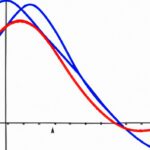The Gini coefficient helps measure income inequality in a society. A higher coefficient indicates more inequality. Governments analyze this data to formulate policies promoting equity. By understanding income distribution trends, policymakers can address social disparities effectively. The coefficient is a critical tool in combating poverty and fostering inclusive growth. It offers insights into the gap between the wealthy and the impoverished. A lower Gini coefficient signifies a fairer distribution of wealth among citizens. This metric is essential for creating a more just and prosperous society. Countries with lower coefficients tend to have better social cohesion and stability.
Table of Contents
- Applications of Gini coefficient
- Calculation method
- Criticisms and limitations of Gini coefficient
- Definition of Gini coefficient
- Interpretation of Gini coefficient
(Understanding the Gini Coefficient)
The Gini coefficient measures income inequality in a society. It shows wealth distribution among individuals. Lower scores indicate more equality while higher scores imply greater inequality. It helps policymakers understand societal disparities and design effective interventions. By analyzing income distribution, governments can identify areas needing economic reform. Developing countries often use the Gini coefficient to track progress towards equality. It aids in poverty alleviation efforts by targeting vulnerable populations. Communities with lower inequality tend to have better social cohesion. The coefficient reveals not just financial disparities but societal health too. When income gaps narrow, economies tend to be more stable and resilient. Governments use the Gini coefficient to gauge the success of economic policies. By fostering fairness, societies can create a more sustainable future for all. The index provides valuable insights into societal well-being beyond just financial measures. In essence, the Gini coefficient serves as a vital tool in shaping a more equitable world.
Applications of Gini coefficient
The Gini coefficient isn’t just a fancy math concept reserved for statisticians and economists. It’s got real-world applications that can help us understand and address inequality in society. Let’s dive into some of the ways this tool is used to make a difference.
One powerful application of the Gini coefficient is in assessing income distribution within a population. Imagine a country where wealth is concentrated in the hands of a few, leaving many struggling to make ends meet. By calculating the Gini coefficient based on individuals’ incomes, policymakers can pinpoint areas where inequality is most pronounced and design targeted interventions to level the playing field.
Another fascinating use of the Gini coefficient is in analyzing educational opportunities. In regions where access to quality education varies widely, this metric can reveal disparities that might otherwise go unnoticed. A high Gini coefficient in education indicates that some students are getting a leg up while others are left behind, prompting educators to rethink their strategies for fostering equal learning environments.
Healthcare equity is yet another area where the Gini coefficient plays a crucial role. By examining healthcare outcomes across different demographic groups, experts can identify gaps in access and quality of care. A higher Gini coefficient suggests uneven health outcomes among populations, signaling the need for policies that ensure everyone has fair and equal access to medical services.
On top of all these practical uses, the emotional impact of understanding inequality through the lens of the Gini coefficient cannot be overstated. It shines a light on those who are marginalized or disadvantaged, urging us as global citizens to take action toward building more just societies.
In conclusion, whether it’s tackling income inequality, addressing disparities in education, or promoting healthcare equity – the applications of the Gini coefficient empower us to confront social injustices head-on with data-driven insights and compassionate hearts.
Calculation method
Calculating the Gini coefficient, a measure of income inequality, involves diving into statistical depths to reveal societal disparities. This method peels back layers of economic data with precision and nuance, offering insights that transcend mere numbers.
To crunch these numbers effectively, one commonly used formula is based on plotting cumulative income distribution against cumulative population percentage. Picture it like mapping out a landscape of financial standing – each point representing wealth levels in society, from destitution to opulence.
In this mathematical terrain lies a story waiting to be told – where the Gini coefficient becomes not just a number but a narrative thread weaving through the fabric of social justice. It’s here that we uncover truths about how resources are distributed among people and grapple with questions of fairness and inclusivity.
As we navigate through this calculation method, emotions may run high. The stark reality painted by the Gini coefficient can evoke empathy for those at the lower end of the income spectrum while prompting reflection on our collective responsibility towards creating a more equitable world.
The process itself is both art and science – blending technical rigor with human sensitivity. Every figure crunched carries weight beyond its numerical value; it speaks volumes about power dynamics, systemic biases, and opportunities for positive change.
Through this calculation method lens, we peer into mirrors reflecting societal structures too often obscured by averages and medians. We see faces behind statistics – families struggling to make ends meet, communities striving for better futures, individuals whose stories are etched in every decimal point calculated.
So as we delve deeper into understanding the nuances of calculating the Gini coefficient, let’s remember: behind every data point lies a life lived – full of challenges faced and dreams pursued. And perhaps therein lies the true essence of why these calculations matter – not just as metrics but as compasses guiding us towards a fairer tomorrow filled with hope and shared prosperity.
Criticisms and limitations of Gini coefficient
The use of the Gini coefficient, a measure of income or wealth inequality in a population, is widespread in economics and sociology. However, it’s not without its fair share of criticisms and limitations that cast doubt on its effectiveness.
One major criticism leveled against the Gini coefficient is its reliance on aggregate data. By looking at only the distribution of income within a society as a whole, it fails to capture nuances like regional disparities or variations among different social groups. This limitation can result in an oversimplified view of inequality, masking important details that could influence policy decisions.
Moreover, the Gini coefficient doesn’t account for non-monetary forms of wealth or well-being. For instance, it overlooks factors like access to education, healthcare services, or quality living conditions – all crucial aspects when assessing overall societal fairness and opportunity distribution.
Another point often raised is that the Gini coefficient assumes perfect equality at either extreme (0 for complete egalitarianism and 1 for maximal inequality). This binary approach may not accurately reflect real-world scenarios where even small differences in income distribution can have significant implications for social cohesion and economic stability.
Critics also argue that the Gini index treats all inequalities equally without distinguishing between those arising from structural injustices versus individual efforts or choices. This lack of nuance can lead to skewed interpretations and misguided policy interventions aimed at addressing inequality effectively.
Despite these criticisms, it’s essential to recognize the value of the Gini coefficient as a tool for highlighting broad trends in income distribution patterns. While imperfect, it serves as a starting point for discussions around equity issues and provides valuable insights into societal dynamics.
In conclusion, while the Gini coefficient remains a prominent metric for measuring inequality levels globally, acknowledging its inherent limitations is vital for interpreting results with caution and considering complementary indicators to paint a more comprehensive picture of socio-economic disparities.
(What is the Gini coefficient, and what is it used for? | CNA Explains)
Definition of Gini coefficient
The Gini coefficient is like a mathematical superhero that swoops in to measure income distribution within a population. It’s basically a number between 0 and 1, where 0 means perfect equality (everyone has the same income) and 1 signifies extreme inequality (one person has all the money).
Imagine you’re at a party with ten friends, and each of you earns $10. That scenario would be pure equality; your Gini coefficient would be zero. But if one friend makes $100 while the rest still earn just $10 each, that’s major inequality – with a Gini coefficient close to 1.
This magical formula takes all the individual income differences in society and crunches them into one neat statistic. It’s like peeking into the soul of wealth distribution!
Understanding this concept can give us insights into how fair or unfair our society is when it comes to sharing its financial pie. So when people talk about “income inequality,” they often whip out this trusty Gini coefficient as proof.
Visualize it: The higher the Gini value, appearing closer to one on paper, suggests that more wealth is concentrated in fewer hands – painting an image of privilege for some alongside deprivation for many others within society.
It’s not just numbers on a page; these values carry real-world implications affecting people’s lives every day. They highlight disparities that can spark debates around social justice issues like poverty reduction efforts or tax policies aiming for equitable outcomes among diverse groups.
So next time someone tosses around terms like “Gini Coefficient,” remember – behind those fancy words lies a tool revealing stories of who gets what slice of the economic cake!
Interpretation of Gini coefficient
When diving into the interpretation of the Gini coefficient, we’re delving into a realm where numbers tell stories of societal wealth distribution. At its core lies a numerical representation showcasing how income or wealth is distributed among a population. The coefficient ranges from 0 to 1 – with 0 symbolizing perfect equality and 1 indicating extreme inequality.
Imagine a community where everyone has an equal share of resources; in this utopian scenario, the Gini coefficient would be zero. Contrariwise, consider a society where one individual monopolizes all the wealth while others struggle to make ends meet – here, the Gini coefficient would near closer to 1.
The real-world application of interpreting this statistic carries immense weight as it offers insight into economic disparities within communities. A lower value signifies more equitable distribution, suggesting that individuals across various socioeconomic strata have comparable access to resources and opportunities.
Conversely, when faced with a higher Gini coefficient figure above 0.5, it acts as an alarm bell for policymakers and economists alike. Such results reflect pronounced inequalities plaguing society wherein significant proportions of wealth are concentrated in the hands of few elites while masses grapple with financial insecurities.
Emotions can run high when confronted with stark figures outlining such disparities – feelings of outrage at injustices that breed such divide often stir within us as we digest these findings. Yet, amidst these emotions lie critical calls for action and policy reform aimed at rectifying systemic inequities and fostering inclusivity on broader scales.
As observers interpret these coefficients across different regions or countries worldwide, they unravel tales woven by numbers – narratives spotlighting socio-economic structures shaping livelihoods behind closed doors.
So next time you scan through statistics detailing Gini coefficients Remember: beyond mere digits lie stories begging to be shared – stories advocating for change rooted in empathy and understanding our collective humanity’s diverse shades under varying degrees of economic disparity











